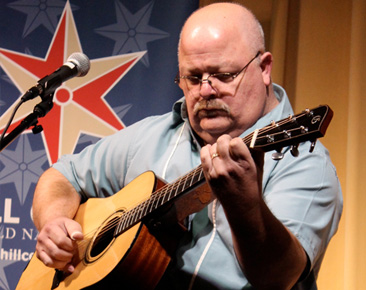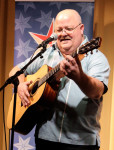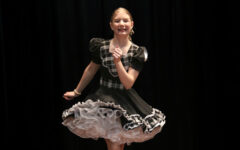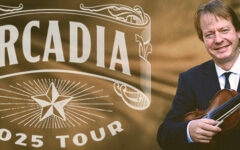
 When you lay down your cash to hear Jim Hurst pick and sing, you never know what you’re what going to hear, but you can bet you’ll get your money’s worth.
When you lay down your cash to hear Jim Hurst pick and sing, you never know what you’re what going to hear, but you can bet you’ll get your money’s worth.
That was certainly the case Monday for the 25 or so hardy souls who braved a cold night in the nation’s capital to hear Hurst perform as part of a new bluegrass/roots music series at the Hill Center, which started out as a Navy hospital commissioned by Abraham Lincoln in the Civil War era.
In two stellar sets, Hurst tackled the familiar and obscure, using his distinctive blend of flatpicking and fingerpicking to deliver a master class in acoustic guitar. There was bluegrass, to be sure, but also jazz and blues and a bit of old time, and, yes, some good old rock ‘n’ roll. And all of it delivered in a fresh, approachable style.
Consider Buffalo Gals. Every beginning player of acoustic stringed instruments gets to this song very early on in the lessons process. I know for sure that I stumbled across it – and stumbled through it – on the guitar and the banjo. But it sure didn’t sound like a beginner’s exercise when Hurst worked his way through it, a cascade of notes embellishing yet not burying the melody.
Angeline the Baker was equally instructive. This is a staple for those learning beginning fiddle tunes. But Hurst made it fresh by dropping into a C tuning last heard by guitar aficionados from Jimmy Page of Led Zeppelin. (And that wasn’t the only nod to rock. Hurst closed the second set with a soulful rendition of Mustang Sally.)
Hurst is known primarily as an instrumentalist, but his vocals are more than passable. (I mean, if he could sing much better, some bluegrass stars would probably have contracts out on the guy who has been known as Guido since childhood. It just wouldn’t be fair to play like he plays and sing that well, too.)
The playing? Let’s just say that the music world benefitted greatly when Jerry Reed instructed a young and starstruck Hurst not to try to play like him, but to play like Jim Hurst. That allowed Hurst to follow his own path, and not to follow all the Tony Rice disciples when the master came along. Sure, Jim Hurst can sound like the best – Chet Atkins, Doc Watson, Tony and Jerry – but then he’ll go off and do something on his own.
Simply put, the guy can coax more sounds out of an acoustic guitar than anyone not named Clarence White has heard. Indeed, sometimes, even Jim Hurst doesn’t know where Jim Hurst is going.
 “I went places tonight that I haven’t been in a long time,” he said at one point in the second set. On a few occasions, that included places he didn’t want to go. But he’d just back up a bar or two and start over. Nobody seemed to mind.
“I went places tonight that I haven’t been in a long time,” he said at one point in the second set. On a few occasions, that included places he didn’t want to go. But he’d just back up a bar or two and start over. Nobody seemed to mind.
If you asked the folks in the room about their favorite moment, you’d probably get a dozen different answers. But for me, the “keeper” highlight was something that Hurst said after the show was totally unintentional. Coming out of the intermission, he had joked about how the crowd might have been larger if the government was still shut down. Then, he launched into a stunning instrumental arrangement of a song that seemed the perfect antidote to a bitterly divided Congress – Both Sides Now.
It was unplanned, unrehearsed. It was pure Jim Hurst.







